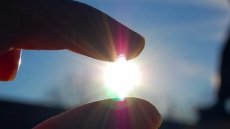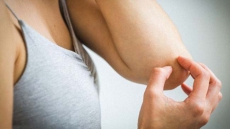Ayurvedic practitioners have a very balanced and holistic approach to treating diabetes. Diabetes is a chronic disorder that arises when the pancreas fails to produce enough insulin, or when the body does not effectively use the insulin it produces.
While Ebola virus and Swine flu are predominantly spreading the fear across the globe, another silent killer – Diabetes Mellitus, is becoming a growing concern worldwide. With approximately 347 million people suffering from diabetes, World Health Organization (WHO) has predicted that diabetes will be the 7th leading cause of death by 2030.
While synthetic and allopathic drugs are proving helpful, there are often incidences of ‘Insulin Resistance’ and side effects from prolonged administration of medicines, thereby making people seek alternative and safer options like Ayurveda and Yoga. Though some doctors may warn diabetics against turning to Ayurveda, the fact remains that its holistic approach, work on the root cause of the disease, strengthening the patients’ immunity, enhancing digestion and helping them lead a healthy life. In fact, Diabetes Mellitus was first reported some 3000 years ago and discussed at length in Charaka Samhita, the ancient Ayurvedic classic text.
Derived from the Sanskrit words – Ayur (life) and Veda (knowledge), Ayurveda is based on the simple principle that all living things are made up of five elements – Earth, water, fire, air and space and there are three types of energies or doshas present – Vata, Pitta and Kapha, all disease and disorders are caused by an imbalance in these energies. Ayurveda refers to diabetes mellitus as ‘Madhhumeha’ or ‘Prameha’, and believes that it is caused due to an imbalance in the Kapha dosha. The main causes of diabetes are unhealthy eating habits that aggravate the Kapha dosha, lack of exercise, excessive sleep and stress.
While modern science divides diabetes in two types – Type 1 and Type 2, the detailed study of diabetes in ancient scriptures divides it into 20 sub-divisions. This division is based on doshas – 4 are due to Vata dosha (Vataja), 6 are due to Pitta dosha (Pittaja) and 10 are caused by Kapha dosha (Kaphaja). The symptoms for the disorder too, are further segregated depending on the three divisions, which are as follows:
Kaphaja: Indigestion, loss of appetite, cold with running nose, excessive sleep, vomiting tendency.
Pittaja: Pain in bladder and urinary tract, pain in testes, fever, burning sensation, thirst, acidity. giddiness, diarrhea, loss of sleep.
Vataja: Tremors, insomnia, cough, difficulty in breathing, constipation, wasting away.
TREATMENT & APPROACH
Ayurvedic practitioners have a very balanced and holistic approach to treating diabetes. As diabetes is a chronic disorder that arises when the pancreas fail to produce enough insulin, or when the body does not effectively use the insulin it produces - Ayurvedic scholars believe that it can only be treated if the body is re-energized and cleansed completely. Hence the principal aim of Ayurvedic treatment is to restore the balance of the doshas. There are two different types of therapy that Ayurveda administrates:
Apatarpana (de-nourishment)and Samshodhana (cleansing):
This type of treatment is usually practiced if the patient is obese and heavily built. In this style of therapy, along with anti-diabetic drugs, maximum stress is given on de-nourishment of fats and elimination of endotoxins by way of various exercises, fasting and cleansing methods known as panchakarma (fivefold therapies, which are emesis, purgation, enema, bloodletting and errhines). This begins with herbal massages and an herbal steam sauna, followed by fasting to cleanse the body. This is followed by an herbal purge for the liver, pancreas, and spleen. Colon therapy is next, first to cleanse the digestive tract and then to reconstitute the system.
Santarpana(replenishment) and Brumhana (body bulk promotion)
This method of treatment is followed if the patient is chronically ill, has low immunity, and is underweight due to the draining of essential nutrients. This therapy helps in providing the easily acceptable nutrients and micronutrients to rebuild body tissues and help strengthen the defense mechanism without increasing circulating blood sugar, fats and other metabolites. This prevents further damage and ensures enhanced healing and repair.
DIET PLANNING
Diet plays an essential role if you are opting for an Ayurvedic approach to treat diabetes. The first and foremost priority of an Ayurvedic practitioner is to set a diet plan for the diabetic patient. Avoiding sweets, carbohydrates, red meat, seafood and dairy products is recommended as all these are known to aggravate the Kapha energy.
As per Ayurveda, a diabetic patient’s food proportion should be 60% vegetables, 30% protein, 10% carbohydrates with half an hour of mild exercise such as walking. The diet should be complimenting the Kapha energy and should include protein-rich foods like soya bean products and lentils like chickpea, moong, masoor and vegetables like spinach, leafy greens, bottle gourd, bhopla (white pumpkin), snake gourd and bitter gourd and, cereals like green millet, ragi, corn, horse gram and barley.
Eating smaller portions throughout the day is recommended. It is also important to avoid smoking, reduce intake of alcohol, sleep adequately, check blood sugar levels periodically, check weight periodically and maintain ideal body weight.
EXERCISE
Exercise is crucial when managing diabetes. Yoga is extremely beneficial, especially asanas like Paschimottanasana and Halasana as well as Pranayama and Vajrasana.

HERBS & DRUGS
Instead of chemical drugs that come with several side effects and other complications, Ayurveda relies on using herbs in the management of diabetes. The herbs used for treatment are usually bitter, astringent and pungent in taste. Some of the widely used herbs are as follows:
Eugenia jambolana (Jamun beej churna): Dry seed powder of Jamun fruits are known to be effective in treatment of prameha and most Ayurvedic doctors often prescribe a dose of it.
Gymnema sylvestre (Gudmar patra churna): The dry leaves of this plant are used as yet another effective Ayurvedic drug to treat diabetes.
Pterocarpus marsupium (Vijaysar churna): Bark of this plant is available in the form of powder, and is administered for curing diabetes.
Ficus bengalensis (Nyagrodha twaka churna): Commonly known as banyan tree bark, a decoction of prepared from this bark is quite popular among ayurveda doctors to treat the disorder.
Shilajeet: Popularly known as rock salt, it is used as an excellent remedy for loss of libido in males and in case of generalized weakness in patients suffering from diabetes.
C. Tamal (Tejpatra): Known as curry leaves, this commonly used spice is strongly recommended in all diabetic patients’ meal.
Fenugreek seeds (Methi churna):Methi seeds soaked overnight and had early in the morning with warm water are strongly recommended by an Ayurveda practitioner.
Momordica chirantia Karvellaka (Karela): Juice of Karela is another favorite amongst Ayurveda doctors and is suggested to every diabetic patient.
Embelica officinalis (Amla): Fresh Amla is of great help for people suffering from prameha.
Curcuma longa (Haridra):Haldi powder along with Amla juice is a very good combination in patients of Diabetes. It is especially useful in prevention as well as treatment of patients of Diabetic eye disease.
Apart from the above herbs, an Ayurvedic physician may also prescribe Ayurvedic drugs, which help in lowering the blood sugar and prevent any long-term complications of diabetes.
With its roots dating back to thousands of years, the traditional ancient science of Ayurveda certainly has several hidden secrets to fight challenging diseases and live a healthy life.
Disclaimer: This article is for information only and should not be used for the diagnosis or treatment of medical conditions. The author has used reasonable care in compiling the information but the publication makes no warranty as to accuracy. Consult a doctor or other health care professional for diagnosis and treatment of medical conditions






